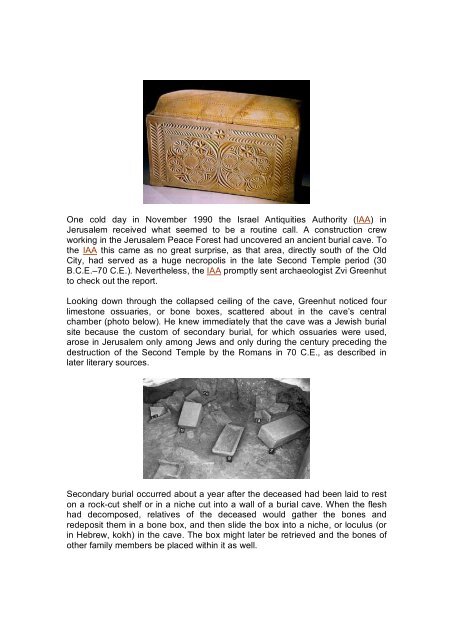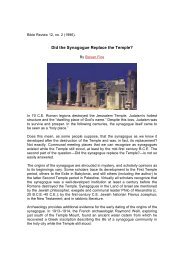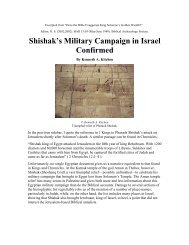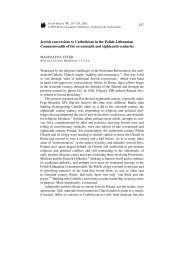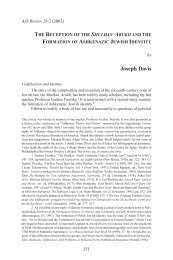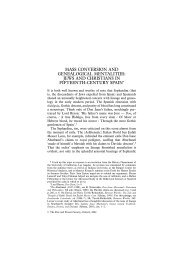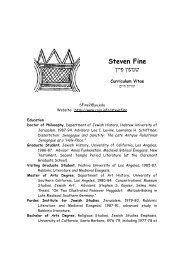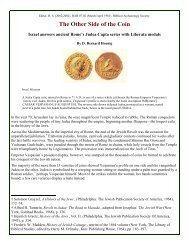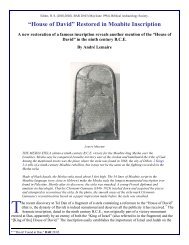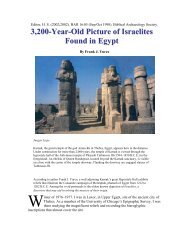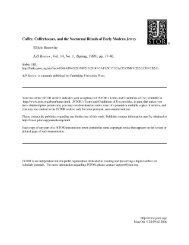Why Bone Boxes? Splendor of Herodian Jerusalem reflected in ...
Why Bone Boxes? Splendor of Herodian Jerusalem reflected in ...
Why Bone Boxes? Splendor of Herodian Jerusalem reflected in ...
Create successful ePaper yourself
Turn your PDF publications into a flip-book with our unique Google optimized e-Paper software.
One cold day <strong>in</strong> November 1990 the Israel Antiquities Authority (IAA) <strong>in</strong><br />
<strong>Jerusalem</strong> received what seemed to be a rout<strong>in</strong>e call. A construction crew<br />
work<strong>in</strong>g <strong>in</strong> the <strong>Jerusalem</strong> Peace Forest had uncovered an ancient burial cave. To<br />
the IAA this came as no great surprise, as that area, directly south <strong>of</strong> the Old<br />
City, had served as a huge necropolis <strong>in</strong> the late Second Temple period (30<br />
B.C.E.–70 C.E.). Nevertheless, the IAA promptly sent archaeologist Zvi Greenhut<br />
to check out the report.<br />
Look<strong>in</strong>g down through the collapsed ceil<strong>in</strong>g <strong>of</strong> the cave, Greenhut noticed four<br />
limestone ossuaries, or bone boxes, scattered about <strong>in</strong> the cave’s central<br />
chamber (photo below). He knew immediately that the cave was a Jewish burial<br />
site because the custom <strong>of</strong> secondary burial, for which ossuaries were used,<br />
arose <strong>in</strong> <strong>Jerusalem</strong> only among Jews and only dur<strong>in</strong>g the century preced<strong>in</strong>g the<br />
destruction <strong>of</strong> the Second Temple by the Romans <strong>in</strong> 70 C.E., as described <strong>in</strong><br />
later literary sources.<br />
Secondary burial occurred about a year after the deceased had been laid to rest<br />
on a rockcut shelf or <strong>in</strong> a niche cut <strong>in</strong>to a wall <strong>of</strong> a burial cave. When the flesh<br />
had decomposed, relatives <strong>of</strong> the deceased would gather the bones and<br />
redeposit them <strong>in</strong> a bone box, and then slide the box <strong>in</strong>to a niche, or loculus (or<br />
<strong>in</strong> Hebrew, kokh) <strong>in</strong> the cave. The box might later be retrieved and the bones <strong>of</strong><br />
other family members be placed with<strong>in</strong> it as well.


